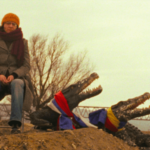Robert Gordon’s documentary assembles a mosaic from Murray Lerner’s long-lost 1960s footage to reframe the Newport Folk Festival years from 1963 to 1966. Shot in a transporting black-and-white register, the film leans into its material as a narrative rather than a collage, showing how a turning point in pop culture grew out of a broader sense of community and activism.
Unlike the 1967 classic Festival, Newport & the Great Folk Dream foregrounds the festival’s evolving ethos. It traces how folk performances—ranging from rootsy Appalachian string work to radical civil rights era anthems—coexisted with experimentation and a widening sense of audience participation.
Acrucial moments and a radical equality ethic
Early segments spotlight 1963 as a crucible for equality and collaboration. The era’s artists—Clarence Ashley, Doc Watson, the New Lost City Ramblers, the Freedom Singers, and others—deliver stark, primal performances that feel almost elemental. The film also notes Pete Seeger’s bold move to pay every performer the same stipend, a radical act that underscored the movement’s shared purpose.
As the documentary moves into 1964 and 1965, it charts a festival in motion: Beatlemania in the air, cross-pollination with artists like Buffy Sainte‑Marie and José Feliciano, and the electrifying currents that began to flow on Newport’s stages. The turning point arrives when Bob Dylan takes the stage with the Paul Butterfield Blues Band, a backing ensemble that had formed in a rush and helped propel Dylan’s electrified set into history.
The movie makes the moment feel inevitable, not sensational: the electric performance is presented as part of a larger narrative about how folk music’s ideals—community, solidarity, and a willingness to adapt—were being tested and transformed by the mid‑1960s. Dylan’s electrified night is presented as part of a broader arc that shows the festival loosening its acoustic leash while the era’s music pushed outward toward rock and personal expression.
In the end, the 1966 edition serves as the final chapter: a festival that marks the closing of an era, when the dream of folk as a unifying force met the era’s broader currents. The documentary presents that closure not as failure but as a turning point that helps us understand why the Newport moment mattered—and why its memory still resonates for musicians and fans alike.
Source: Original article



